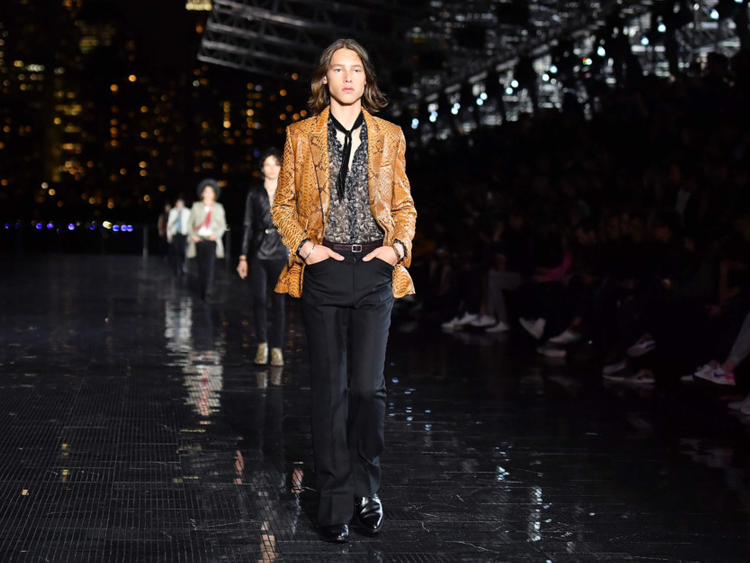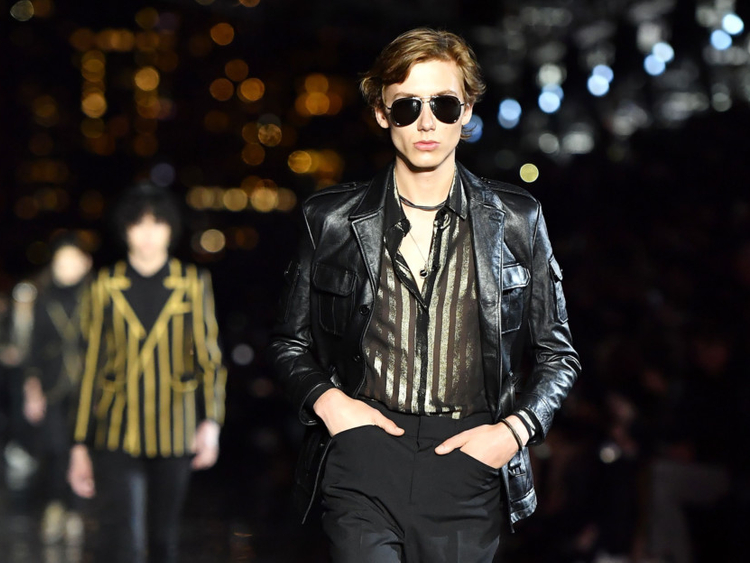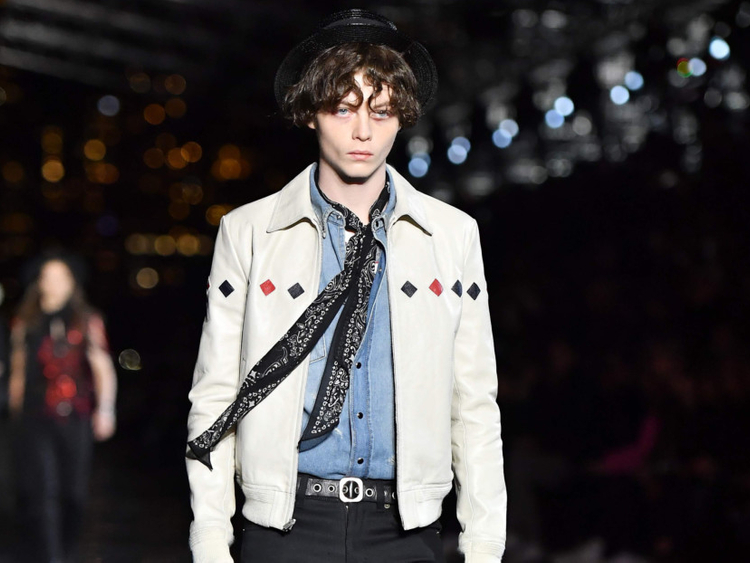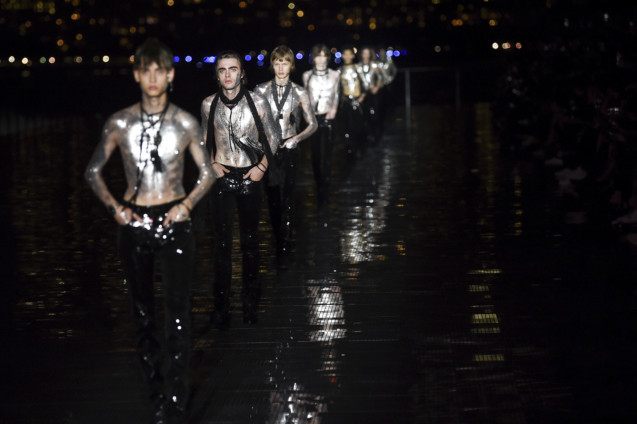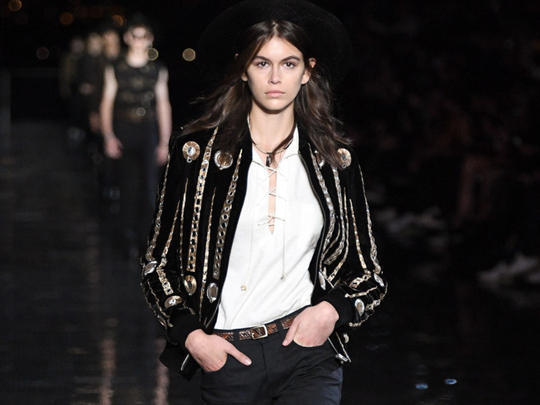
As ever with a Saint Laurent show, the location was hard to ignore — the creative director, Anthony Vaccarello, baited Instagram with a ritzy Eiffel Tower backdrop for his womenswear show in February. For his first menswear show since joining the label in spring 2016, he took his audience to New York.
“I thought it was nice. Nothing is happening here. Everything is moving to Paris,” he said backstage, referring to the exodus from New York fashion week. At New Jersey’s Liberty State Park, built on landfill tidal flats jutting out into the Hudson, guests — many of whom had been flown into the city for the event — sat on tiered open scaffolding, while models (59 men, 10 women) walked down a wet-look marble catwalk. In the distance, the curated backdrop of Manhattan played a starring role. Ten years after the death of Yves Saint Laurent, the brand he founded remains an imposing presence on the fashion landscape. Saint Laurent Paris, as it was renamed by Vaccarello’s predecessor, Hedi Slimane, is both throwback and forward-looking.
The afterparty, held on a boat, was a homage to the 1978 launch party for YSL’s Opium perfume, replete with caviar snacks and Hawaiian orchids, while the collection (for “an urban macadam cowboy”, Vaccarello said) fused Sunday lunch and dive bar, town mouse and country mouse — old Saint Laurent and new Saint Laurent, in other words.
Backstage, Vaccarello explained that he was trying to recreate Yves Saint Laurent’s own wardrobe. That meant high waists, cropped jackets, lapelled leather jackets (signature Saint Laurent outerwear), tight black trousers (ditto), and fine shirts that were more akin to blouses, and shot with gold, adorned with paisley or — of course — in leopard print, worn half-buttoned.
Yves’ love of Marrakech came through via denim hoodies, tangled necklaces, belted saharienne jackets and black grosgrain boating hats that sat on the models’ crowns like dark halos against the skyline. It was mostly black, save some prints and heavily sequined tops and jackets. Towards the end came a heavy, black ursine jacket, which made a noise as it passed. The take-home image was the finale, when the male models appeared topless, sprayed in silver and wearing sequin trousers.
So far so Saint Laurent. Blink and you would miss the minor updates — black trousers that came slightly bootcut, or skinny scarves worn slightly looser than under the styling of Slimane, and dangled perilously close to the ground. Footwear was scuffed Converse or square-toed Cuban heels. Minor adjustments, but key to both the house and the designer, who has taken two years to properly venture into menswear. He explained it was only now that he felt confident enough to show menswear separately. Vaccarello has been rising through high fashion for the past decade. After working under Karl Lagerfeld at Fendi in Rome, in 2009 he started his own label and in 2014, met Donatella Versace, who fell for his micro hems and took him on at Versus. Vaccarello has since pioneered the “legs for days” look. That does not always mean short skirts — see a slit up to the hip bone (his muse Anja Rubik’s 2012 Met Gala white satin gown put him on the map), or the famous slouched rhinestone boots worn by Rihanna that scored two magazine covers.
That women and men wore trousers in this show (albeit elongated by some extra-high, square-toe Cuban heels) suggests Vaccarello is game for progression. Of the 10 women on the catwalk, a starry roster of his favourites including Kaia Gerber and Binx Walton, very little skin was on show. Menswear was tailored to fit the women. His new thing, he says, is not just putting women in men’s clothes, but men in women’s.
Turning menswear into something lucrative will be Vaccarello’s next challenge.
The hype before was palpable, not least because Vaccarrello is better known for ultra-sexy, micro-hemlined womenswear — in fact he once said menswear was more important for women than men. In 1973, Bianca Jagger asked Yves Saint Laurent in Interview magazine if he was ever inspired by men. “Absolutely not at all,” he replied. By contrast, Vaccarello told Harper’s Bazaar: “You probably never see it directly in my work, but I always start with the men’s silhouette before doing the collection.”



